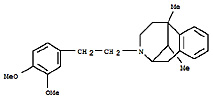Category Archives: Chemicals
SBQ Powder N-Methyl-4-(P-Formylstyryl)-Pyridinium Methylsulfate
Product Name: N-Methyl-4-(p-formylstyryl)pyridine methyl sulfate;N-Methyl-4-(p-formyl styryl)-pyridinium methyl sulfate;SBQ Powder;Photosensitive material SBQ;Photoresist SBQ SBQ Powder (N-Methyl-4-(P-Formylstyryl)-Pyridinium [...]
Feb
3,3′-Diaminodiphenyl Sulfone Curing Agent for Epoxy Resin
3,3′-Diaminodiphenyl sulfone is used as a curing agent for epoxy resin and also an important [...]
EL-Ammonium Tartrate Dibasic for High Purity Applications
EL-Ammonium Tartrate, the ammonium salt of tartaric acid, is used in such applications as cell [...]
Ortho-phthalaldehyde is a Reliable Chemical Sterilant
Ortho-phthalaldehyde (OPA) received clearance by FDA in October 1999. OPA solution is a clear, pale-blue [...]
Understanding Carbon Fiber Reinforced Polymer Composites
Carbon Fiber Reinforced Polymer Composites (CFRP) are lightweight, strong materials used in the manufacturing of [...]
Thermosetting Resins – An Introduction
The main characteristic of thermosets (literally setting under heat) is that they require curing, when [...]
Tartaric Acid and Organic Acids
Tartaric acid is a white crystalline diprotic organic acid. It occurs naturally in many plants, [...]
Chemicals for Advanced Composite Materials
3,3′-DDS and 4,4′-DDS can be used to formulate structural materials (advanced composite materials) including carbon [...]
High Purity EL Ammonium Tartrate Applications
Ammonium tartrate, the ammonium salt of tartaric acid, is used in such applications as cell [...]
Nano-coating to protect buildings against pollution
The photocatalytic properties of anatase, one of the three naturally occurring forms of titanium dioxide, [...]
- 1
- 2

